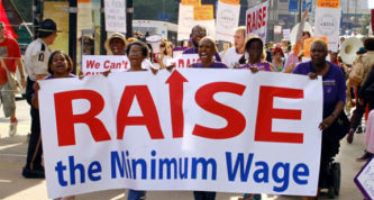Costa Mesa Stands Up To Public Unions
MARCH 7, 2011
By LAER PEARCE
The chambers were packed at Costa Mesa’s City Council meeting last Tuesday night, and understandably so. After all, the council was considering sending pink slips to 203 city employees – 43 percent of the Orange County city’s workforce – warning them they could be laid off in six months. Just before midnight, the council voted 4-1 to send out the pink slips, even though they were staring down a roomful of angry city workers who had argued loudly against the action.
Driving the move were three factors, from least to most important: A July 1 deadline for the city’s 2011-2012 budget, a silly requirement to give a six-month notice before layoffs (talk about the profound difference between the public and private sectors!), and increasingly overbearing pension and benefit expenses.
Not just in California, but everywhere cities are looking at pension contribution costs with a critical eye. Costa Mesa, like many California cities, only had to casually toss a few dollars in the general direction of CalPERS during the flush years, but that time has gone, and now it is forced to cover a share of the liabilities created by years of CalPERS losses on disastrous investments and years of enhancements to union employee benefits. Few, if any, have done what Costa Mesa did on Tuesday, but all cities certainly will be watching to see if Costa Mesa carries out its threat. Then they’ll assess the city’s ability to win the legal challenges that almost certainly will follow, and ultimately, they’ll be counting how much the city’s CalPERS contribution drops if all 203 pink slips really do turn into actual workforce cuts.
As a private business owner, I look at Costa Mesa and, gratified as I am by its action, my main thought is, “Why did it take them so long?” The private sector certainly doesn’t reward such delays. During the recession, my company laid off an employee for the sole reason of reducing the overhead – benefits, federal and state withholding tax liabilities – associated with having employees. We looked at the numbers and saw we had no choice, even if it was terribly unpleasant to act responsibly, for us and for the great employee who had to let go. Local government, long able to spend other people’s money without consequence, is suddenly in a position where they too have to act responsibly.
The state and federal gravy trains are now empty, even as local leaders are stuck with expensive commitments they made when times were good, when they should have built up reserves and paid down liabilities instead of sweetening benefits and growing staffs.
What’s most interesting about Costa Mesa’s action is that four members of the council were able to look a couple hundred angry people in the eye and still cast the right vote. (The dissenting vote was cast by Councilwoman Wendy Leece, who angered the county’s Republican leadership after she won an endorsement on a promise of supporting only defined contribution plans for city employees, then voted to grant 3@50 defined benefit pensions to four unions.) It wasn’t too long ago that the four-man majority would have thought casting such their votes would be political suicide in the face of public employee union power, but no more. The politicians on the council now sense that there are more voters who are sick to death of government over-generosity with taxpayer money than there are voters who want them to keep the generosity spigot open wide.
In the end, the decision was pretty straightforward. “We’re going to run out of money sometime this year if nothing changes,” Councilman Eric Bever told the crowd, which largely seemed to prefer declaring municipal bankruptcy over taking serious efforts to avoid it.
The city intends to keep services going by outsourcing the work to private sector employees who don’t come with pension strings attached. Should the City Council ultimately fire 43 percent of city staff, and should city services be delivered just as well or better without union-represented workers, other cities in the state will really begin to take notice. And if that happens, the power public employee unions’ hold over cities, counties and the state will be significantly diminished.
# # #
Laer Pearce, a veteran of three decades of California public affairs, is currently working on a book that shows how everything wrong with America comes from California.
Related Articles
Pro-biz group releases “job-killer” and “job-creator” lists
The annual “job-creator” and “job-killer” lists are out — 31 top priorities of the California Chamber of Commerce. The pro-business group,
Congress conflicts on CA drought
Despite substantial labors on both sides of the aisle, legislators in the House and the Senate alike have failed to
Minimum wage divides experts
Voters will likely decide on the November ballot whether or not to raise California’s minimum wage to $15 per hour,




